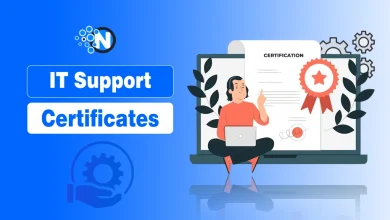From Chaos to Clarity: Organizing Your Tech with a Software Audit
According to research, more than 60% of businesses lose up to 20% of their profits due to outdated IT systems and disorganized processes. Manufacturing companies are particularly vulnerable to digital inefficiency, often using outdated IT systems that cause delays and errors in production processes.
Financial institutions face data breaches and penalties because their IT systems fail to meet security requirements. Retailers lose customers due to slow and unreliable inventory and sales management systems.
This list of victims could also include the telecommunications and healthcare industries. However, one thing is common to all of them, the vulnerability and inefficiency of their IT infrastructures.
The most common causes of IT inefficiency are unnecessary licenses, outdated systems and siloed data. They create chaos in the IT infrastructure, and the cumulative effect is problematic software management. Are you one of the potential victims?
When did you last audit your software? If the answer is “never,” you have a problem that could be a hidden inefficiency.
Below, we discuss the first and most necessary step in solving the issue: software auditing services.
The Problem of Disorganized IT
Chaos in IT inevitably becomes an obstacle to a company’s growth. It’s about disorganized processes, disjointed software, and outdated systems, the combination of which leads to software failures that make it difficult to perform operational tasks. All of this leads to poor performance and increased operating costs — an algorithm that demonstrates the vulnerability of any system that uses software to manage it.
Let’s take one of the biggest headaches for IT system architects and system integrators, conflicting software. The essence of this problem is incompatibility between different programs that are trying to use the same resources or functions at the same time. For example, your company uses two systems: one for project management and one for time tracking, both of which are integrated with each other. However, due to incompatible versions of these programs, the timekeeping data is not properly synchronized, resulting in errors in your employees’ payroll.

The solution is regular software audits to identify conflicting programs: incompatible versions, competition for the same resource, improper integration, and lack of updates. Once problematic software is identified, DevOps engineers and software support specialists come into play. Their job is to set up CI/CD pipelines to automate software update processes, but that’s not all. TechHG knows more about IT sustainability issues.
A Little More Detail: What is Software Audit?
The Software Audit Service is a detailed review of all software solutions used in the organization, their compliance with business requirements, and their efficiency. The goal of the audit is to identify problems; for example, SECL Group focuses on finding outdated systems, incompatible software, license violations and security vulnerabilities.
Software Audit Algorithm:
- Software health assessment: Verifies current versions, performance, and reliability of software in use.
- Security: Identify vulnerabilities and protect data from threats.
- License optimization: Verify proper license usage and reduce redundant software costs.
- Conflict resolution: Identify incompatibilities and conflicts between programs in the IT infrastructure.
Overall, software audit helps create a more stable, secure and efficient IT environment by eliminating chaos, improving system compatibility and increasing productivity by 15-20% (the IT industry average). Technology checkup is a proactive tool that helps organizations maintain the health of their IT infrastructure.

Business Benefits of Software Audit
Efficiency is something that business people know better than anyone. An audit allows a business to get a complete and transparent picture of its IT assets so it can get the most out of them. The benefits extend not only to optimizing current processes, but also to justifying future investments.
A partial list of the business benefits of software certification services:
| Advantage | Description | Evaluation Criterion |
| Cost optimization | Identify unnecessary software, reduce costs | Financial efficiency |
| Licensing compliance | Ensure license compliance | Legal security |
| Increased productivity | Update software to boost efficiency | Business process efficiency |
| Simplifying processes | Streamline and standardize software | Process transparency |
| Ensuring scalability | Assess system growth potential | Flexibility and adaptability |
| Reducing operational risks | Identify potential failures and risks | Risk management |
| IT infrastructure transparency | Full picture of software used | Information clarity |
| IT investment justification | Identify programs to replace or update | Investment feasibility |
| Regulatory compliance | Ensure safety compliance | Regulatory adherence |
| Digital transformation | Identify barriers to transformation | Transformation progress |
| Eliminating tech debt | Remove outdated or poorly integrated systems | Technological relevance |
| UX improvement | Enhance interfaces and functionality | User satisfaction |
“Starting with a software audit is the best way to bring clarity to your technology environment.” — IT-consultant.
How to Start an Audit and What to Expect
Many companies fear that an audit will be a complex process that will take up a lot of time and resources. But working with a professional audit team simplifies the process and minimizes disruption to day-to-day operations. In fact, the audit can be conducted in stages so as not to disrupt business operations, and most audits are conducted remotely. This makes auditing easy and transparent when done right.
The first step in the right direction starts with choosing an audit partner. Benchmarks such as the candidates’ experience and reputation will help you: check references and case studies. Another important criterion is competence and certification: trust CISA, CISSP, ISO 27001 holders.
Also influential are approach and methodology, cost and value – these two parameters must be rationally balanced, and finally support and follow-up: there must be a package of post-audit services, as offered by SECL Group.
IT Infrastructure Audit Process:
- Define objectives and scope.
- Data collection.
- Analysis and evaluation.
- Develop recommendations.
- Implement changes.
Expected Results:
- Improved productivity.
- Improved safety.
- Regulatory compliance.
- Reduced costs.
- Improved reliability.
Starting an audit is easier than it sounds, and the results can far exceed expectations. HackerNoon is the definitive source for information on IT audits.
To Sum It Up
A software monitoring service is essential to bring order to chaotic IT systems. It helps find inefficiencies, outdated programs, and potential risks, giving businesses clear steps to improve their IT setup. A software audit boosts productivity, cuts costs, and strengthens security by fixing software conflicts, making systems scalable, and ensuring compliance.
Working with an experienced monitoring team makes the process easy and doesn’t interrupt daily operations. Start improving your IT systems today, and see how a well-organized technology strategy can help your business grow and succeed.
FAQs
Q: We don’t have time for an audit.
A: An audit can be conducted in stages without disrupting daily operations.
Q: We can’t afford an audit.
A: Audits often pay for themselves by reducing costs and eliminating inefficiencies.
Q: We’re not sure it will be effective.
A: Companies that have conducted audits report significant improvements in performance and efficiency.




